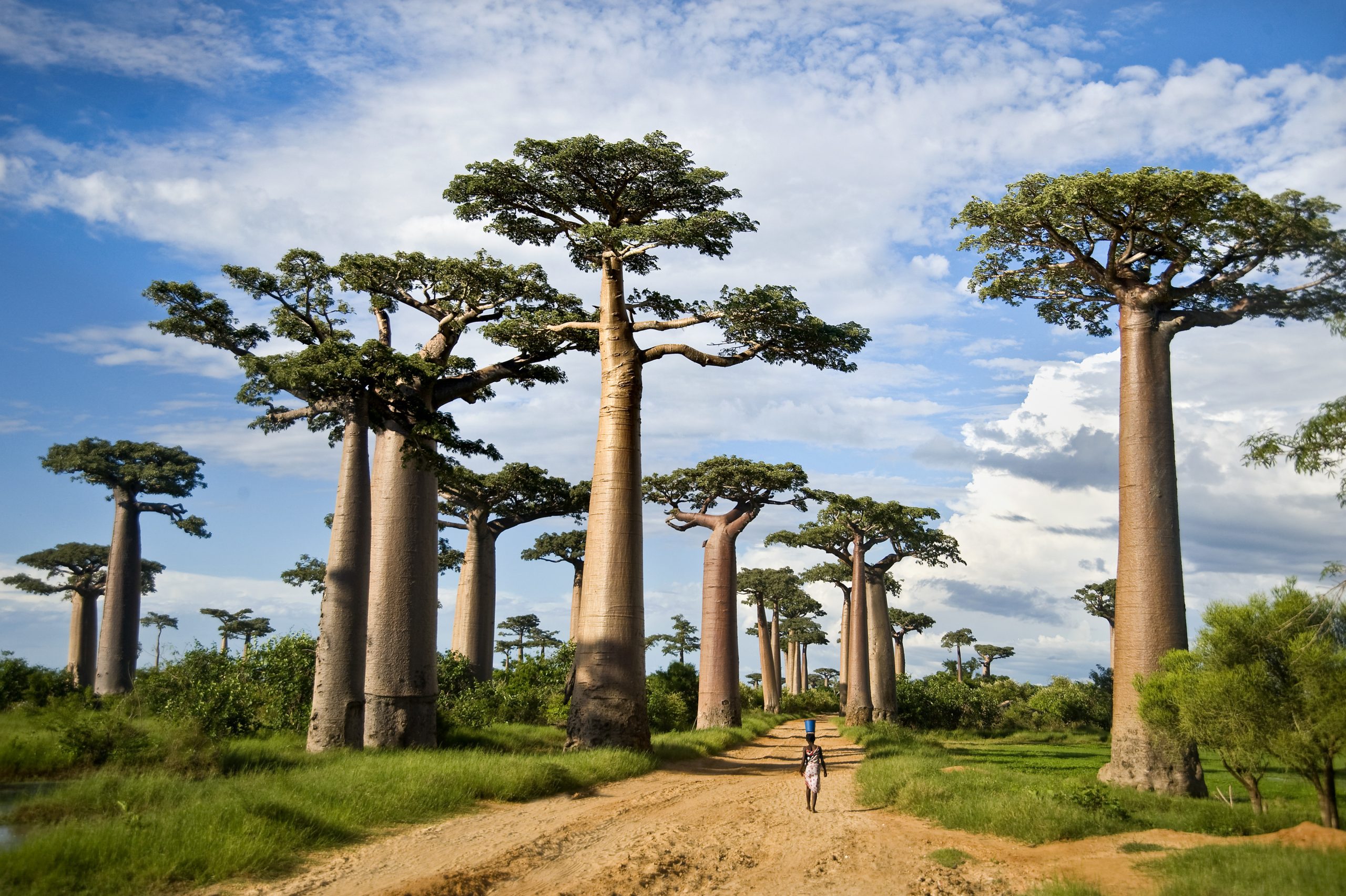Baobab trees
Baobab trees, scientifically known as Adansonia, are among the most iconic and remarkable species of the African savanna. With their massive, bottle-shaped trunks and sparse, root-like branches, these trees are instantly recognizable—even more so when they shed their leaves during the dry season. Their surreal appearance has made them a symbol of the landscape, standing tall and strange against the vast African sky.

Beyond their unique look, baobabs are known for their incredible longevity. Some trees are estimated to be over a thousand years old, with a few believed to have stood for several millennia. Their thick trunks are natural water reservoirs, capable of storing thousands of liters to survive long droughts. This makes them an essential lifeline for both wildlife and nearby communities, earning them the nickname “tree of life.”

Baobabs also provide a range of other ecological benefits. Their fruit is highly nutritious, rich in vitamin C, and increasingly popular worldwide as a superfood. Leaves are used for cooking and traditional medicine, while the hollow trunks and thick branches offer shelter for birds, insects, and small mammals. In many rural areas, locals rely on baobabs for food, shade, and survival.
Because of their resilience and usefulness, baobabs have become deeply embedded in African folklore. Some legends say they were planted upside down by the gods, explaining their unusual shape. Others view them as spiritual trees with wisdom passed through generations. Today, the baobab remains not just a biological marvel, but a cultural treasure and a powerful symbol of endurance.
